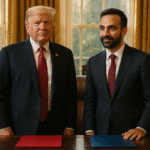In an era of globalization and digital interconnection, humanity shares one planet, yet remains divided by many forms of governance. The phrase “One World, Many Governments” captures this paradox perfectly. While the world is unified through trade, technology, and shared challenges such as climate change and pandemics, it is fragmented by vastly different political systems, from liberal democracies to absolute monarchies and authoritarian regimes. Understanding how these systems evolved, why they persist, and what impact they have on global power politics provides essential insight into our collective future.
Historically, governance has been as diverse as the civilizations that birthed it. Ancient Mesopotamia, Egypt, and China pioneered centralized rule, while Greece and Rome experimented with republicanism and democracy. The Enlightenment era in the 17th and 18th centuries revolutionized thought, arguing that the right to rule derives from the people, not divine authority. This laid the foundation for modern democratic governance. The 20th century saw another major transformation as decolonization birthed new nations, each experimenting with its own ruling structure. The Cold War polarized governance: capitalist democracies versus socialist one-party systems. Today, the world presents a mosaic of democracies, full, flawed, and hybrid, alongside theocracies, autocracies, and monarchies.
The reasons behind these differences are complex and interwoven. Historical legacies play a major role: colonial powers often left behind institutional blueprints, such as the Westminster model in India or civil law systems in Africa. Social structures, economic capacity, and cultural norms also shape governance. In nations with ethnic diversity or fragile economies, authoritarian or hybrid models often arise to maintain stability. External influences matter too during the Cold War; superpowers promoted their ideologies abroad. Even in the present day, global institutions and foreign powers often shape governance outcomes through aid, trade, and diplomacy.
Power and politics define how these systems operate. Democracies rely on institutional checks and balances to distribute power, while authoritarian regimes centralize it. In between, hybrid systems maintain a façade of elections and pluralism but are controlled by ruling elites. The balance of legitimacy and coercion determines a system’s stability. While democracies thrive on contestation and accountability, autocracies often depend on propaganda, surveillance, and control. Yet both face challenges: democracies struggle with populism and gridlock, while autocracies risk stagnation and revolt.
A comparison of global cases illustrates this diversity. India’s parliamentary democracy, despite corruption and polarization, remains one of the world’s most resilient systems, grounded in regular elections and constitutional order. China, on the other hand, exemplifies single-party authoritarianism with technocratic governance prioritizing efficiency and stability over individual freedom. Iran blends theocratic authority with republican institutions, showing how religion and politics can intertwine. Russia’s “managed democracy” retains electoral forms but suppresses dissent, revealing how hybrid regimes operate. Historically, ancient empires like Egypt’s “hydraulic despotism” centralized control over resources, proving that the concentration of power is not new; only its form has evolved.
The impact of governance structures is profound. Democracies tend to foster innovation and human rights, but can be slow in decision-making. Authoritarian regimes can act swiftly but often do so at the cost of freedom. Systems concentrating power risk deepening inequality and repression, while those dispersing it may promote participation and inclusivity. On the global stage, governance shapes alliances and rivalries: democracies often unite around shared values, while autocracies cooperate based on strategic interests. History repeatedly shows that systems unable to adapt from monarchies to totalitarian states eventually crumble under their own rigidity.
In today’s world, the contrast between systems is sharper than ever. According to global indices, democracy has declined for several consecutive years, while authoritarianism and hybrid regimes have expanded their influence. Polarization, inequality, and disinformation have eroded trust in democratic institutions. Meanwhile, nations like China and Russia project alternative governance models that prioritize control and order. This raises a key question: can democracy reinvent itself to survive in the 21st century?
In my view, no single model of governance can claim universal superiority. What matters most is responsible pluralist systems that balance authority with accountability and value the consent of the governed. Democracy must evolve, integrating technology, transparency, and inclusivity while defending freedom of speech and human rights. Autocracies may offer short-term efficiency, but history teaches that societies thrive when power is questioned, not feared. The future of governance lies not in uniformity but in adaptation, a coexistence of systems guided by the shared principles of dignity, justice, and participation. Ultimately, the challenge for our century is ensuring that the many governments ruling our one world do not merely command their citizens but serve them. True leadership is not about control; it is about responsibility.
















